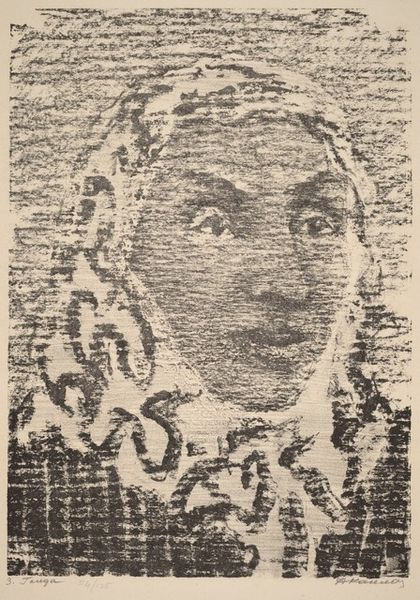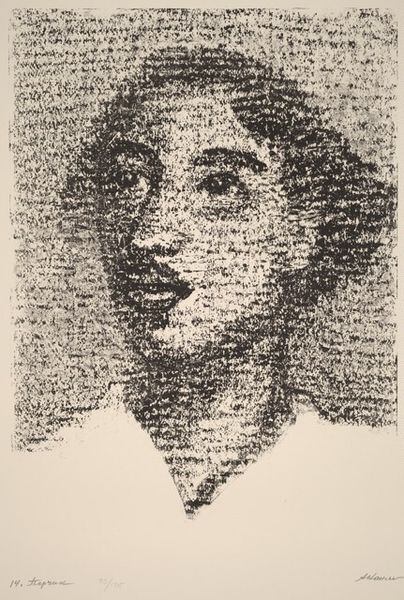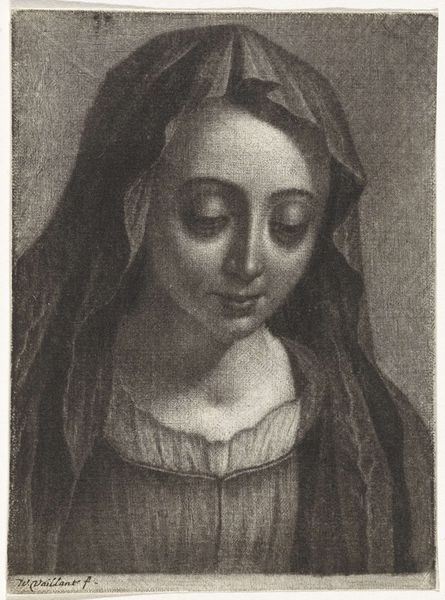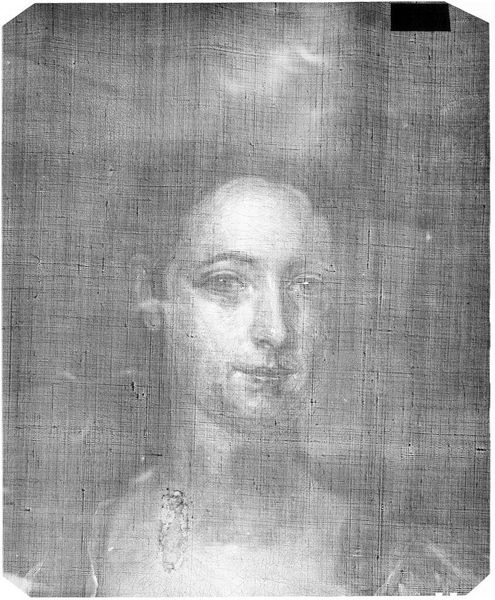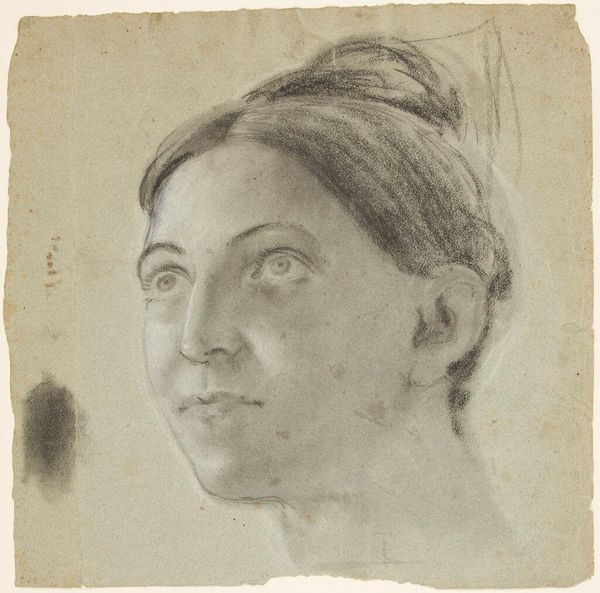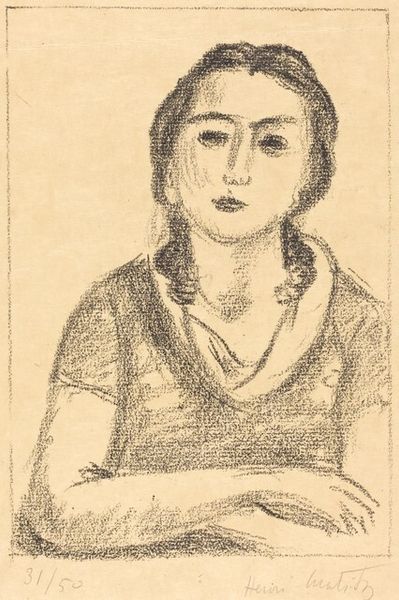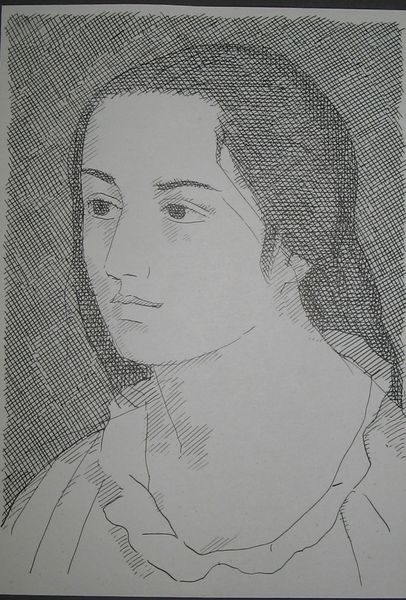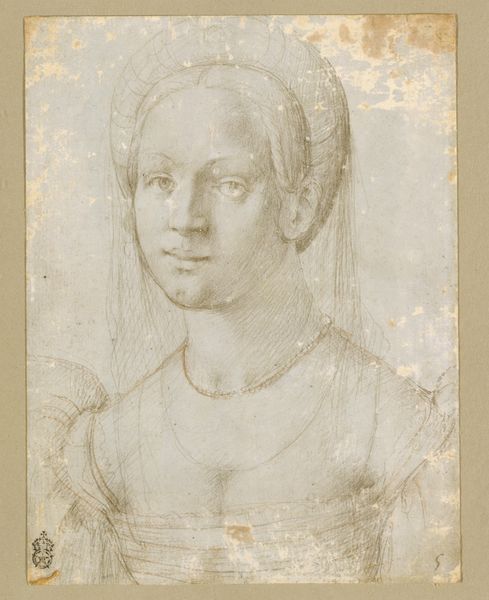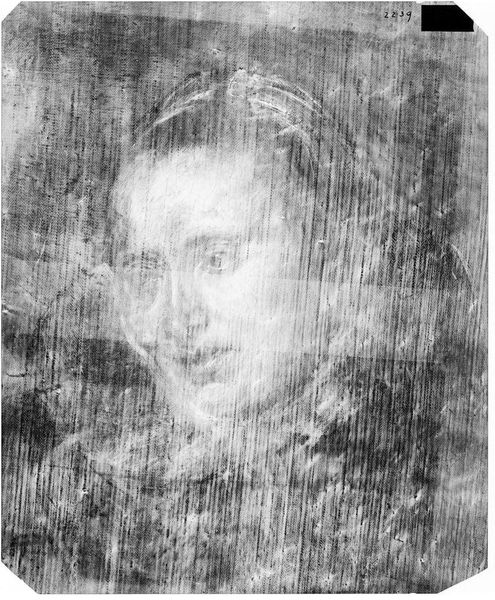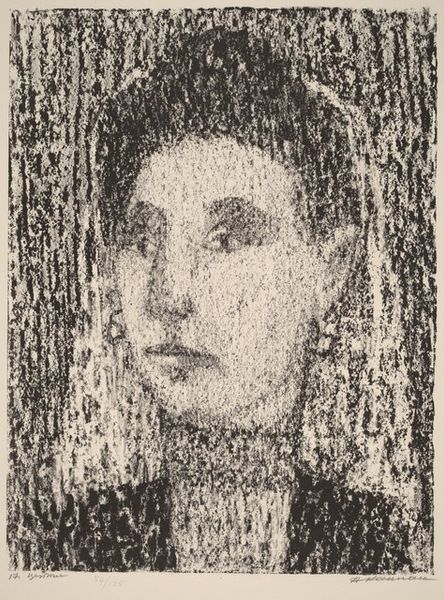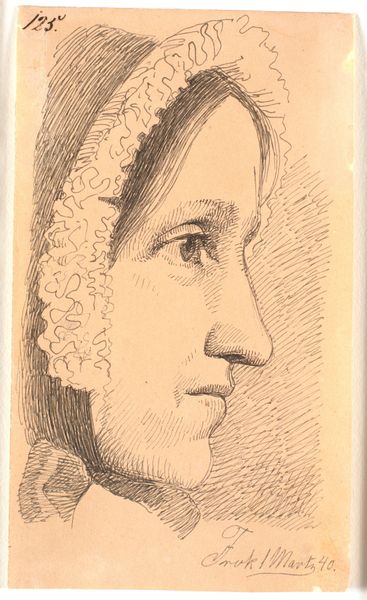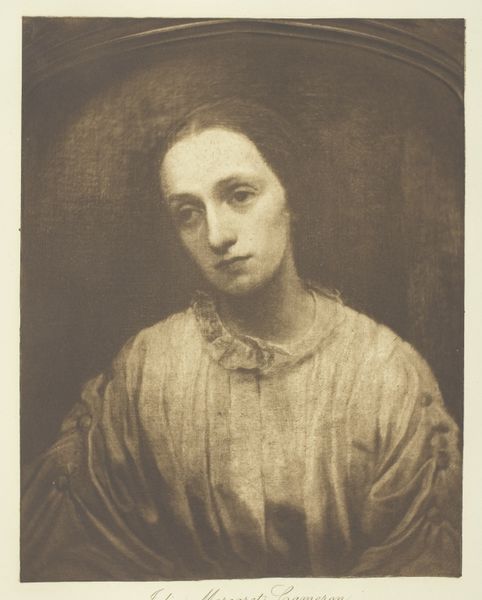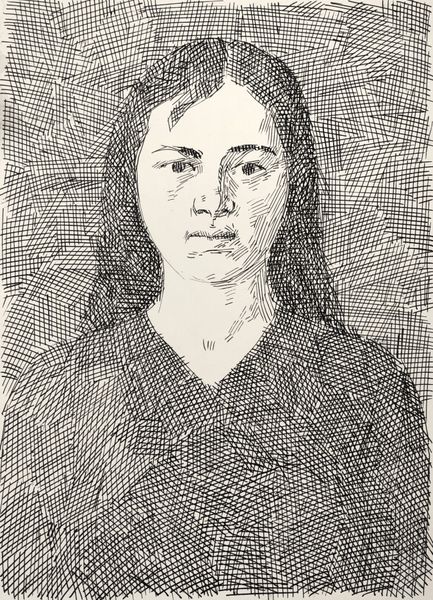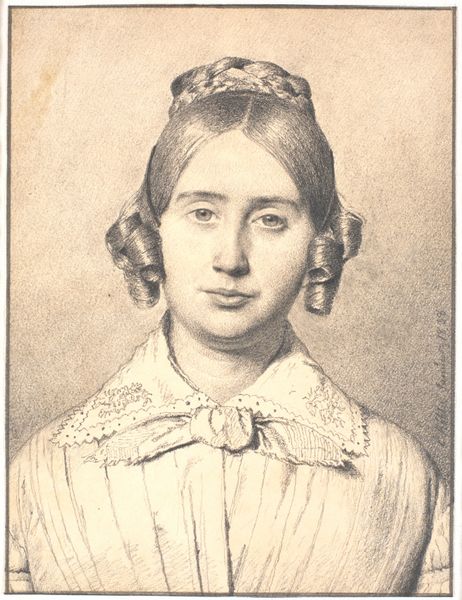
Bust of Young Woman in Three-Quarter View (Buste de jeune femme en trois quarts) Possibly 1906 - 1933
0:00
0:00
drawing, graphic-art, print, ink
#
portrait
#
drawing
#
graphic-art
#
cubism
# print
#
figuration
#
ink
#
line
#
portrait drawing
#
modernism
Copyright: National Gallery of Art: CC0 1.0
Curator: Welcome. Here we have a work entitled “Bust of Young Woman in Three-Quarter View,” by Pablo Picasso. Though undated, scholars believe it likely originates from between 1906 and 1933. Editor: The striking contrast between the white and harsh black creates an intriguing depth—it almost feels carved, a bit brutalist, yet delicate in its linework. Curator: It’s important to understand the sociopolitical context Picasso worked in, a period marked by rapidly changing social structures, industrialization and the avant-garde movements challenging artistic norms. Prints and graphic arts were critical to democratize art, bringing avant-garde concepts into everyday life. Editor: Right. What draws my attention immediately is how the composition is constructed of simple shapes, yet manages to define a very human expression. The eyes especially—empty but so focused! It's pure formal economy achieving evocative realism. Curator: And that reflects Cubism's challenge to traditional representation, breaking down form into geometric components, mirroring a fragmented reality reshaped by modernity. This "bust" isn't simply a portrait, but a reflection of shifting cultural identities in the face of relentless modernization. Editor: Yes! And consider how that intense contrast shapes perception, moving beyond faithful likeness towards psychological presence. This use of the printing technique gives a textural quality to a flattened plane. Curator: Printing processes like this allowed greater access and circulation of art to new audiences, it's essential for us to not only see its formal innovation but the politics of distributing the aesthetic within the culture. Editor: I see your point! It's incredible how seemingly simple techniques can carry complex historical and aesthetic significance. Thank you, that's broadened my understanding considerably. Curator: And yours as well! This fusion of history and form unveils an artistic gesture deeply resonant with its era, highlighting the democratizing role of artistic practice.
Comments
No comments
Be the first to comment and join the conversation on the ultimate creative platform.
